Những công trình kiến trúc - xây dựng nổi tiếng nhất ở Mexico, Cuba,Brazil, Argentina, Peru & Venezuela(biển Caribbean, Trung & Nam Mỹ) 

1. Mexico: Mexico có nền văn minh hơn 3.000 năm của vài sắc dân, như là dân
Mexico có nền văn minh hơn 3.000 năm của vài sắc dân, như là dân  Aztec, Olmec, Toltec và Maya đã có một nền văn minh huy hoàng với những công trình kiến trúc - xây dựng nổi tiếng. Thổ dân Mexica (Mesoamerica & Aridoamerica, đôi khi gọi là Aztec để kỷ niệm Aztlán) tới cao nguyên tại miền trung với những công trình kiến trúc - xây dựng độc đáo riêng và tiếp tục thực hiện những công trình kiến trúc - xây dựng nhưng ai cũng chỉ nghĩ là họ thừa kế những văn hóa dẫn trước. Đối với họ, các nghệ thuật – điêu khắc, kiến trúc, khảm bằng lông và dương lịch – do dân cổ tạl miền Tula, gọi là dân Toltec, họ tới đỉnh cao nhất của văn hóa vào thế kỷ 10 và 11.
Aztec, Olmec, Toltec và Maya đã có một nền văn minh huy hoàng với những công trình kiến trúc - xây dựng nổi tiếng. Thổ dân Mexica (Mesoamerica & Aridoamerica, đôi khi gọi là Aztec để kỷ niệm Aztlán) tới cao nguyên tại miền trung với những công trình kiến trúc - xây dựng độc đáo riêng và tiếp tục thực hiện những công trình kiến trúc - xây dựng nhưng ai cũng chỉ nghĩ là họ thừa kế những văn hóa dẫn trước. Đối với họ, các nghệ thuật – điêu khắc, kiến trúc, khảm bằng lông và dương lịch – do dân cổ tạl miền Tula, gọi là dân Toltec, họ tới đỉnh cao nhất của văn hóa vào thế kỷ 10 và 11. 

Khi người Tây Ban Nha đến Mexico vào đầu thế kỷ 16 và đánh thắng dân Mexica vào năm 1521, thời thuộc địa 300 năm gọi là Tân Tây Ban Nha. Ngày 16 tháng 9 năm 1810, Mexico tuyên bố độc lập từ Tây Ban Nha do Miguel Hidalgo y Costilla, cha Công giáo của xã Dolores, dẫn đến chiến tranh dài, do đó Mexico cuối cùng được độc lập vào năm 1821 và tạo thành Đế chế Mễ Tây Cơ đầu tiên. Sau khi được độc lập, các thuộc địa Tây Ban Nha tại Trung Mỹ được kết hợp vào Mexico từ năm 1822 đến 1823, vào lúc khi tuyên bố độc lập, trừ ra Chiapas. Khởi từ Agua Azul hay Palenque ở Chiapas rồi những "Casa Mexicana" khắp vùng 

Becán,Chicanná,Labná, Kabah ở Yucatan, đến những công trình kiến trúc Tây Ban Nha như nhà thờ Metropolitan, kiến trúc của Puebla như Puebla's Zocalo, nhà thờ Puebla hay Palacio Municipa, khu National Museum of Anthropology thiết kế bởi Pedro Ramírez Vázquez ở Mexico City. Kiến trúc Tây Ban Nha lan rộng tới California qua Texas và Florida. Những công trình kiến trúc - xây dựng nổi tiếng nhất ở Mexico có thể kể là:
Những công trình kiến trúc - xây dựng nổi tiếng nhất ở Mexico có thể kể là:
Casa Antonio Galvez, thiết kế bởi Luis Barragan, ở San Angel, Mexico, xây năm 1954. Casa Luis Barragan, thiết kế bởi Luis Barragan, ở Tacubaya, Mexico, xây năm 1947. Hotel Camino Real, thiết kế bởi Ricardo Legorreta, ở Cancun, Mexico, xây năm 1973 tới năm 1975.
Houses in Mexicali, thiết kế bởi Christopher Alexander, ở Mexicali, Mexico, xây năm 1975 tới năm 1976.
Los Manantiales, thiết kế bởi Felix Candela, ở Xochimilco, Mexico, xây năm 1958. Monte Alban Complex, ở Monte Alban, Mexico, xây năm 100 tới năm 800. Teotihuacan, ở Teotihuacan, Mexico, năm 200 tới năm 800.
UNAM Library, thiết kế bởi Juan O'Gorman, ở Mexico City, Mexico, xây năm 1953. Uxmal, ở Uxmal, Mexico, xây năm 800 tới năm 1400.
Mexico City là thủ đô nên ở đây có nhiều công trình kiến trúc - xây dựng nổi tiếng hơn so với Guadalajara, Cancun, nổi tiếng nhất là: Centro Historico (Downtown),Basilica de Guadalupe (Villa de Guadalupe),Catedral Metropolitana (Zocalo),Palacio Nacional (Zocalo),Sagrario Metropolitano (Zocalo),Casa de los Azulejos (Madreo 4),Palacio de Las Bellas Artes,Palacio de Mineria (Tacuba y Filomeno Mata),Palacio Postal (Tacuba y Eje Central),Palacio de Iturbide (Madero 17),Plaza Manuel Tolsa y Estatua de Carlos IV (Tacuba y Filomeno Mata),Casa de los Condesde San Mateo de Valparaiso (Isabel la Catolica y Venustiano Carranza),Palacio de la Escuela Medicina,Secretaria de Educacion Publica (Republica de Brasil 31),Templo de la Profesa (Madero e Isabel la Catolica),Templo de Santo Dominigo (Belisario Dominiguez Esq., Rep. de Brazil),Templo Mayor (Seminario 8),Templo y Hospital de San Felipe de Jesus (20 de Noviembre 82) & Apocalypse(Mural)...; Casa Lamm, Corredor Cultural de la Roma,Edificio Basurato (Avenida Mexico 187), Edifico Balmori,Iglesia de la Sagrada FamiliaBuilt (xây năm 1910-1912 & 1918-1925);Bosque de Chapultepec,Castillo de Chapultepec,Lagos de Chapultepec,Corredor Comercial de Masaryk,Lomas de Chapultepec,Santa Fe;Monumento a Cuauhtemoc/a Cristobal Colon/a la Independencia,Fuente de la Diana Cazadora;Coyoacan Plaza y Calles,Ex Convento de Churubusco,Parroquia de San Juan Bautista,Palacio de Cortes,San AngelEl Convento de El Carmen,Plaza de San Jacinto,Ciudad Universitaria (Rectoria),Centro Cultural Universitaria,Biblioteca Central,Estadio Olimpico Universitaria,Centro Nacional de las Artes,Cuicuilco...
Centro Historico (Downtown),Basilica de Guadalupe (Villa de Guadalupe),Catedral Metropolitana (Zocalo),Palacio Nacional (Zocalo),Sagrario Metropolitano (Zocalo),Casa de los Azulejos (Madreo 4),Palacio de Las Bellas Artes,Palacio de Mineria (Tacuba y Filomeno Mata),Palacio Postal (Tacuba y Eje Central),Palacio de Iturbide (Madero 17),Plaza Manuel Tolsa y Estatua de Carlos IV (Tacuba y Filomeno Mata),Casa de los Condesde San Mateo de Valparaiso (Isabel la Catolica y Venustiano Carranza),Palacio de la Escuela Medicina,Secretaria de Educacion Publica (Republica de Brasil 31),Templo de la Profesa (Madero e Isabel la Catolica),Templo de Santo Dominigo (Belisario Dominiguez Esq., Rep. de Brazil),Templo Mayor (Seminario 8),Templo y Hospital de San Felipe de Jesus (20 de Noviembre 82) & Apocalypse(Mural)...; Casa Lamm, Corredor Cultural de la Roma,Edificio Basurato (Avenida Mexico 187), Edifico Balmori,Iglesia de la Sagrada FamiliaBuilt (xây năm 1910-1912 & 1918-1925);Bosque de Chapultepec,Castillo de Chapultepec,Lagos de Chapultepec,Corredor Comercial de Masaryk,Lomas de Chapultepec,Santa Fe;Monumento a Cuauhtemoc/a Cristobal Colon/a la Independencia,Fuente de la Diana Cazadora;Coyoacan Plaza y Calles,Ex Convento de Churubusco,Parroquia de San Juan Bautista,Palacio de Cortes,San AngelEl Convento de El Carmen,Plaza de San Jacinto,Ciudad Universitaria (Rectoria),Centro Cultural Universitaria,Biblioteca Central,Estadio Olimpico Universitaria,Centro Nacional de las Artes,Cuicuilco...
Dinh Tổng Thống & Quốc Hội Mexico

Cao ốc: Torre Mayor cao 225 m, 55 tầng, xây năm 2003
Cao ốc: Torre Ejecutiva Pemex cao 211 m, 51 tầng, xây năm 1984
Cao ốc: Torre Latinoamericana cao 182 m, 44 tầng, xây năm 1956


Cao ốc: Torre WTC cao 172 m, 34 tầng, xây năm 1972
Cao ốc: Acos Torre cao 161 m, 55 tầng, xây năm 1996
Cao ốc: Torre Caballito cao 135 m, 34 tầng


Cao ốc: Torre Mural cao 133 m, 33 tầng, xây năm 1995
Cao ốc: Torre Mexicana de Aviación cao 132 m, 30 tầng, xây năm 1984
Cao ốc: Torre Insignia cao 127 m, 25 tầng, xây năm 1962


Cao ốc: Torre SCT cao 115 m, 17 tầng
Cao ốc Edificio Reforma Avantel cao 115 m, 28 tầng
Cao ốc Bộ Ngoại giao(Secretaría de Relaciones Exteriores) cao 112 m, 23 tầng, xây năm 2005


Cao ốc: Centro Bursátil cao 112 m, 26 tầng, xây năm 1990
Cao ốc: Residencial del Bosque I cao 110 m, 30 tầng, xây năm 1996
Cao ốc: Tribunal Superior de Justicia del Distrito Federal cao 90m, 19 tầng, xây năm 2005

Cao ốc: Lotería Nacional cao 225 m, 55 tầng, xây năm 19
Catedral Metropolitana cao 61 m, xây năm 1892


Cao ốc: Torre de Rectoría cao 60 m, 16 tầng, xây năm 1952
Edificio La Nacional I cao 54 m, 13 tầng, xây năm 1952
Biblioteca Central cao 50 m, 13 tầng, xây năm 1953
Những công trình kiến trúc - xây dựng nổi tiếng nhất ở Cancun(Theo Mayan, Cancun là "Golden Snake", gồm Contoy Island & "Sian Ka'an").
Canal Nichupte, Pok-Ta-Pok Golf Club, Convention Center, Punta Cancun, Isla Mujeres, Laguna Bojorquez, Hotel Area, El Rey Ruins, Punta Nizuc, Canal Nizuc, Laguna Imgles, Laguna del Amor, Las Velas, Archaeological Museum, Contoy Island Museum...
2. Cuba: 
 Cuba là quốc gia đông dân nhất tại Caribbean. Dân tộc, văn hoá và phong tục xuất phát từ nhiều nguồn khác nhau gồm cả người bản xứ Taíno và Ciboney, giai đoạn thực dân Tây Ban Nha, sự xuất hiện của nô lệ Châu Phi, và sự gần gũi địa lý với Hoa Kỳ. Hòn đảo này có khí hậu nhiệt đới được làm ôn hoà nhờ các vùng nước bao quanh; tuy nhiên, nhiệt độ cao của biển Caribbean và địa hình hầu như chắn ngang Vịnh Mexico của Cuba, khiến nước này thường xuyên phải hứng chịu những cơn bão lớn. Năm 1511, Diego Velázquez de Cuéllar lập ra khu định cư Tây Ban Nha đầu tiên tại Baracoa Các thị trấn khác, gồm Havana (thành lập năm 1515), nhanh chóng mọc lên. Nước này là nơitiếp thu và hòa nhập nhiều nền văn hoá, chủ yếu từ Tây Ban Nha và Châu Phi.
Cuba là quốc gia đông dân nhất tại Caribbean. Dân tộc, văn hoá và phong tục xuất phát từ nhiều nguồn khác nhau gồm cả người bản xứ Taíno và Ciboney, giai đoạn thực dân Tây Ban Nha, sự xuất hiện của nô lệ Châu Phi, và sự gần gũi địa lý với Hoa Kỳ. Hòn đảo này có khí hậu nhiệt đới được làm ôn hoà nhờ các vùng nước bao quanh; tuy nhiên, nhiệt độ cao của biển Caribbean và địa hình hầu như chắn ngang Vịnh Mexico của Cuba, khiến nước này thường xuyên phải hứng chịu những cơn bão lớn. Năm 1511, Diego Velázquez de Cuéllar lập ra khu định cư Tây Ban Nha đầu tiên tại Baracoa Các thị trấn khác, gồm Havana (thành lập năm 1515), nhanh chóng mọc lên. Nước này là nơitiếp thu và hòa nhập nhiều nền văn hoá, chủ yếu từ Tây Ban Nha và Châu Phi.
 - Đại nhà hát Havana, Garcia Lorca
- Đại nhà hát Havana, Garcia Lorca- Phủ Tổng thống tại Havana, hiện là Bảo tàng Cách mạng
-The National Theater
-Ministry of Interior
-Ministry of Communications
-The Memorial Jose Martí
-The National Library
- Malecón
- Museum of the Revolution /The Palace of the Revolution
- Plaza de Armas
- Plaza de San Francisco de Asis
- Plaza Vieja
- Plaza de la Revolucion
- University of Havana


Hotel Neptuno-Triton Tower I
Hotel Neptuno-Triton Tower II
Edificio Rafael Salas
3. Brazil:
Brasil là quốc gia có diện tích rộng thứ 5 thế giới và dân số cũng đứng hàng thứ 5
 thế giới. Brazil từng là thuộc địa của Bồ Đào Nha trong quá khứ cho đến năm 1822 khi nước này trở thành một quốc gia độc lập. Nền kiến trúc của Brasil bắt đầu từ thời kỳ thuộc địa Bồ Đào Nha, khi những pháo đài trung cổ đầu tiên được người Bồ Đào Nha thiết lập tại đây từ khoảng năm 1530. Trong thời kỳ thuộc địa, những công trình lớn chủ yếu được xây dựng là các nhà thờ và thánh đường mang đậm ảnh hưởng của phong cách kiến trúc Baroque Bồ Đào Nha. Nhiều thị trấn và thành phố cổ ở
thế giới. Brazil từng là thuộc địa của Bồ Đào Nha trong quá khứ cho đến năm 1822 khi nước này trở thành một quốc gia độc lập. Nền kiến trúc của Brasil bắt đầu từ thời kỳ thuộc địa Bồ Đào Nha, khi những pháo đài trung cổ đầu tiên được người Bồ Đào Nha thiết lập tại đây từ khoảng năm 1530. Trong thời kỳ thuộc địa, những công trình lớn chủ yếu được xây dựng là các nhà thờ và thánh đường mang đậm ảnh hưởng của phong cách kiến trúc Baroque Bồ Đào Nha. Nhiều thị trấn và thành phố cổ ở  Brasil được xây dựng với nhiều nét giống với các thành phố của châu Âu. Đầu thế kỉ 19, tại Brasil bắt đầu xuất hiện trường phái kiến trúc tân cổ điển. Rồi đến giai đoạn cuối thể kỉ 19 - đầu thế kỉ 20, các tòa nhà ở Brasil lại chịu ảnh hưởng của phong cách kiến trúc Pháp. Bên cạnh đó, những dòng người nhập cư khác cũng mang đến cho kiến trúc Brasil nhiều sắc thái khác nhau, ví dụ như kiến trúc kiểu Đức tại các bang miền nam Brasil.
Brasil được xây dựng với nhiều nét giống với các thành phố của châu Âu. Đầu thế kỉ 19, tại Brasil bắt đầu xuất hiện trường phái kiến trúc tân cổ điển. Rồi đến giai đoạn cuối thể kỉ 19 - đầu thế kỉ 20, các tòa nhà ở Brasil lại chịu ảnh hưởng của phong cách kiến trúc Pháp. Bên cạnh đó, những dòng người nhập cư khác cũng mang đến cho kiến trúc Brasil nhiều sắc thái khác nhau, ví dụ như kiến trúc kiểu Đức tại các bang miền nam Brasil.Sang thế kỉ 20, kiến trúc hiện đại Brasil đã có nhiều bước phát triển vượt bậc và dẫn đầu các nước ở Nam Mỹ; nhất là số cao ốc và những tác phẩm tuyệt vời nhất. Oscar Niemeyer là một trong những kiến trúc sư nổi tiếng nhất ở Brasil. Ông đã phụ trách rất nhiều công trình lớn tại thủ đô Brasilia và thành phố này đã được UNESCO công nhận là Di sản văn hóa thế giới.
(http://www.emporis.com/en/wm/ci/bu/?id=101076):



 Cao ốc Torre da TV Bandeiran cao 212 m, 8 tầng, xây năm 1997
Cao ốc Torre da TV Bandeiran cao 212 m, 8 tầng, xây năm 1997Cao ốc:Mirante do Vale cao 170 m, 51 tầng,xây năm 1960
Cao ốc: Edifício Itália cao 165 m, 46 tầng, xây năm 1965
Cao ốc: Altino Arantes cao 161 m, 36 tầng, xây năm 1947
Cao ốc: Torre do SBT cao 160 m, 55 tầng, xây năm 1981
Cao ốc:Torre Norte cao 158 m, xây năm 1999
Cao ốc:Begônias cao 158 m, xây năm 2008
Cao ốc: Jabuticabeiras cao 158 m, xây năm 2008
Cao ốc: Magnólias cao 158 m, 55 tầng, xây năm 2008
Cao ốc:Resedá cao 158 m, 55 tầng, xây năm 2008
b. Những công trình kiến trúc - xây dựng nổi tiếng nhất & cao nhất ở Rio de Janeiro: Bức tượng Chúa Cứu Thế nổi tiếng tại Rio de Janeiro
Lelio Gama 105 cao 146 m
 dificio Santos Dumon cao 141 m, xây năm 1975
dificio Santos Dumon cao 141 m, xây năm 1975Ventura Corporate Tow cao 140 m, xây năm 2009
Lineu de Paula Machad cao 138 m, xây năm 1980
Centro Candido Mendes cao 138 m, xây năm 1978
Conde Pereira Carneir cao 133 m, xây năm 1976
Seculo Frontin cao 131 m, xây năm 1983
Frederico Bokel cao 130 m, xây năm 1970
Banco Central do Bras cao 130 m, xây năm 1984
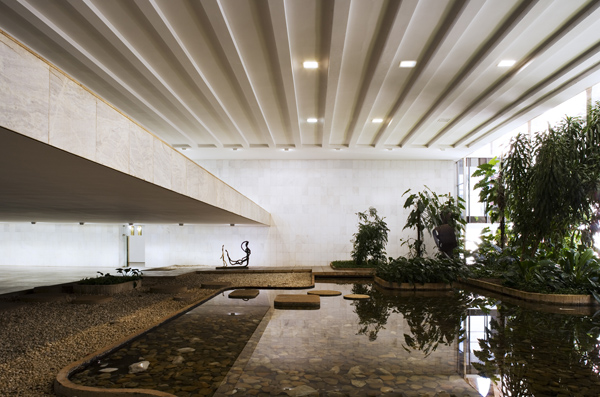
When it comes to architectural photography, very few hold as much international esteem as Leonardo Finotti. His muse is the architecture of Brazil– the works of Niemeyer, of Bardi, of Costa, of Mendes da Rocha and others. As Brazilian architecture is amongst the world’s most progressive, most intercultural, Mr. Finotti is that creative melting pot’s most storied visual diplomat. To celebrate Brazil’s greatest architectural monuments, we asked Leonardo Finotti himself to share with us his favorite works of Brazilian architecture. If the country of Brazil holds a special place in your heart, you will no doubt appreciate this list of the South American nation’s 10 greatest architectural monuments.
National Congress of Brazil by Oscar Niemeyer
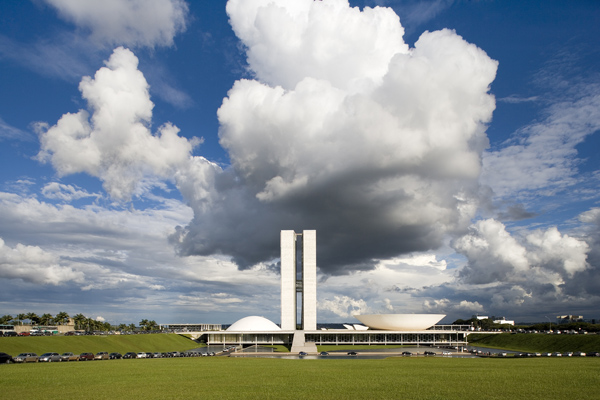
In what building does your national congress meet? If you take a step back, look at your national buildings with fresh eyes, they generally reflect a time far past and a symbolism long dead. In Brazil, the renowned architect Oscar Niemeyer gave his vision to his own country’s congress with the National Congress of Brazil building. The design yields the feeling of balanced emotion, with two opposing sides intersected by a symbol of equality. Whether the cup is half full or half empty, it is the justice of the national congress of Brazil that provides the true balance. Niemeyer’s vision is alive and well in the Brazilian congress of today.
National Congress of Brazil Gallery
Brazilian Museum of Sculpture by Paulo Mendes da Rocha
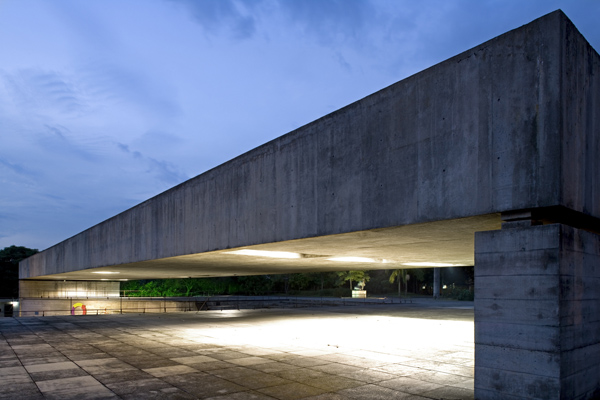
Fans of Ayn Rand‘s classic book The Fountainhead may recognize a bit of the Brazilian Museum of Sculpture from the story of Howard Roark’s temple of humanity. While there is no scuplture of Dominique within, this simple, concrete structure holds this South American nation’s most prized sculptural works. What is angular and barren is accented by vibrant, shapely works of art molded into forms more imaginative than can be seen. Da Rocha’s museum houses them perfectly, providing an unobtrusive canvas that earns an equal respect as the art held within. [link]
Brazilian Museum of Sculpture Gallery
Brazil TV Tower by Lucio Costa
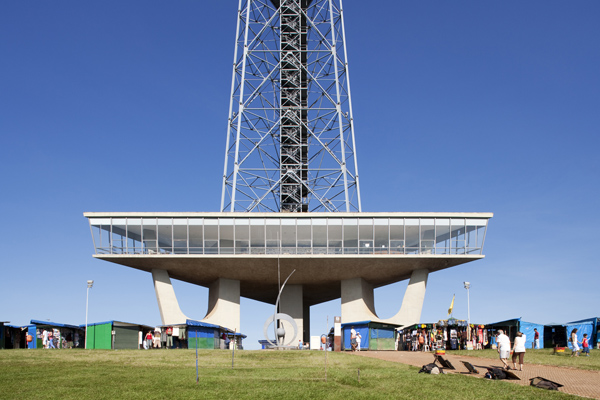
Surprisingly, one of Brazil’s most recognizable and celebrated works of architecture is one that broadcasts another form of art entirely. The Brazil TV Tower by Lucio Costa is a high standing monument to Brazilian technological achievement and a lasting artistic sensibility celebrated in architecture. The TV Tower is one of the nation’s tallest buildings, and its progressive design remains amongst the forefront of the field whether or not its use is beginning to fall to the wayside. [link]
Brazil TV Tower Gallery
Brazilian Ministry of Education by Oscar Niemeyer
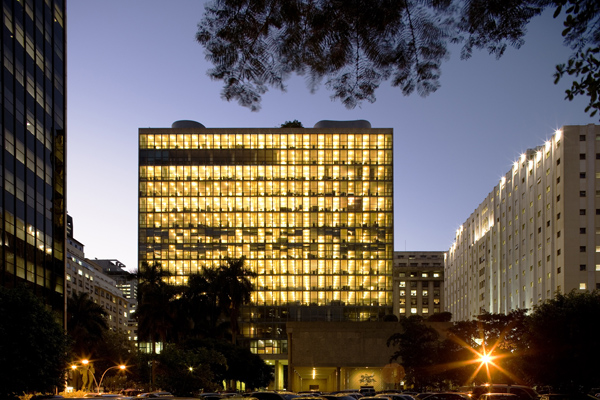
From the exterior, the Brazilian Ministry of Education may not appear as progressive as it is to the untrained eye. To those familiar, it may be reminiscent of the early midrise works of the modern era’s most renowned architects. Step inside, and the Brazilian Ministry of Education celebrates modern design and cultural progress that is widely respected throughout this South American nation. A sheer glance at this building from an evening stroll, you’ll see precisely the vision that Niemeyer (and project partners Lucio Costa and Le Corbusier) had in creating this national spectacle.
Brazilian Ministry of Education Gallery
Palacio da Alvorada by Oscar Niemeyer
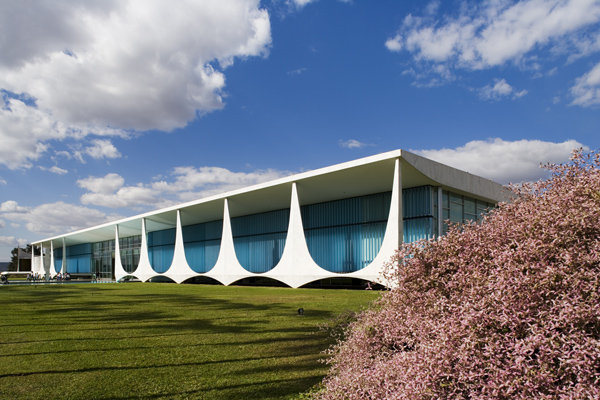
The Palacio de Alvorada is the official home of the President of Brazil. Looks a bit different from the White House, doesn’t it? In Brazil, their modern art is as cherished and involved in their culture as can be, setting a mark of progress in a western world bound by tradition and circumstance. The face of Brazil’s government, the Palacio de Alvorada is where the President wines and dines dignitaries, international heads of state and other guests– proving that Brazil’s cultural sensibility is as progressive, smart and design-oriented as can be.
Palacio da Alvorada Gallery
Brazil’s Civic Square by Burle Max
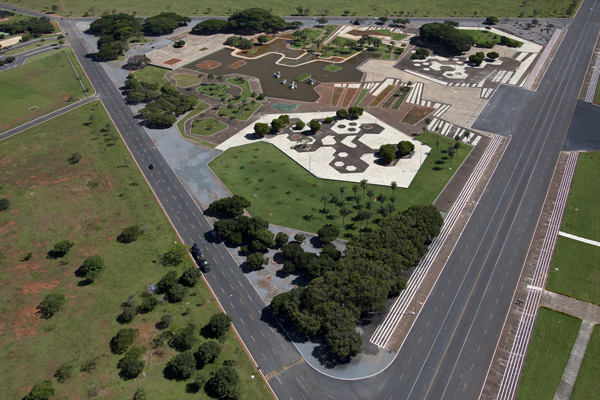
This work of architecture by Burle Max may not be as tall or renowned as other works by Brazil’s foremost architects, but its importance cannot be ovelrooked. Brazil’s Civic Square is a carefully cultivated outdoor park project including mutiple acres of green space, a central pond, a set hiking path and a symbolic structure when viewed from the air. This Civic Square almost looks like the Nazca Lines of the Inca natives, celebrated for their ancient involvement in South American history. While the Civic Square may not be as high reaching as the others on this list, it cannot be ignored for its creative architectural value in Brazil.
Brazil’s Civic Square Gallery
Rio De Janeiro Museum of Modern Art by Afonso Reidy
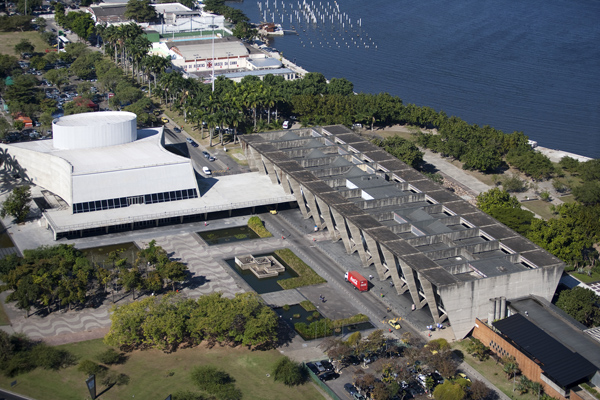
If you’re heading to Rio, you cannot miss the art of the Rio De Janeiro Museum of Modern Art itself. While what is contained within is truly a spectacle to see, the design of the MOMA in Rio demands respect unto itself. The museum occupies two opposing design sensibilities– one of repeated concrete and another of formed metal, a design that shares the building’s stark contrasts. Apparently, our friend Leonardo Finotti was lucky enough to capture a sky view of the museum to show it’s true nature of contrast.
Theater in Ibirapuera Park by Oscar Niemeyer
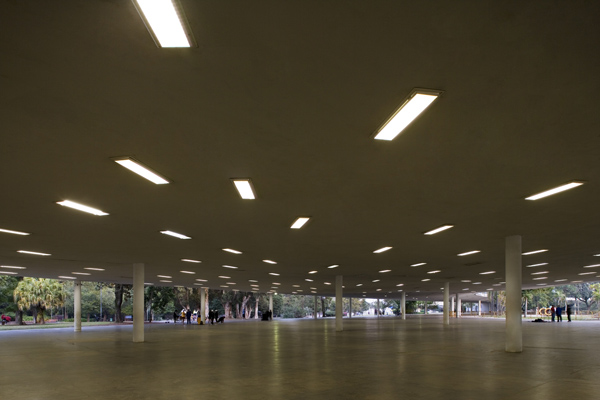
Our home city of Chicago has taken great strides to compete with the work of cities like Sao Paulo and their Theater in Ibirapuera Park. Another work by famed architect Oscar Niemeyer, Ibirapuera Park is a wide, expansive work of architecture capable of housing a celebration a single architecture lover all the way up to a large scale wedding party. Amongst many of Niemeyer’s public designs to be celebrated freely, Ibirapuera Park is an astonishing work of peace and progress in public architecture.
Theater in Ibirapuera Park Gallery
Ministry of External Relations by Oscar Niemeyer
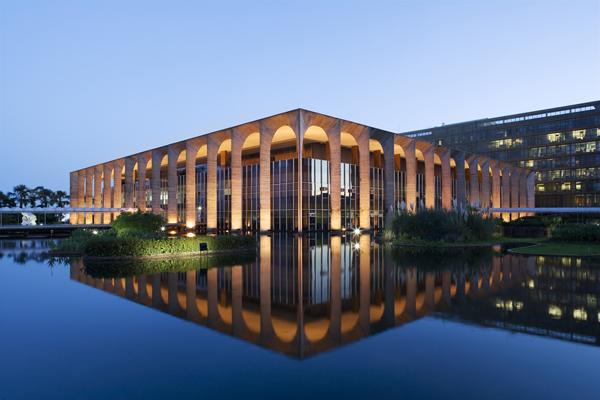
If you’re a foreign government rep not lucky enough to be invited to the Palacio de Alvorada, you’re likely to end up at the equally beautiful Ministry of External Relations. This ministry houses Brazil’s office of diplomacy, the branch of government which sells Brazil’s stature to the modern world. In a place so beautiful, as designed by Niemeyer himself, you couldn’t ask for a better setting. Niemeyer’s work provides for hard evidence that design can play an active role in world politics, and the way our globe shapes itself in cultural awareness.
Ministry of External Relations Gallery
SESC Pompeia Cultural Center by Lina Bo Bardi
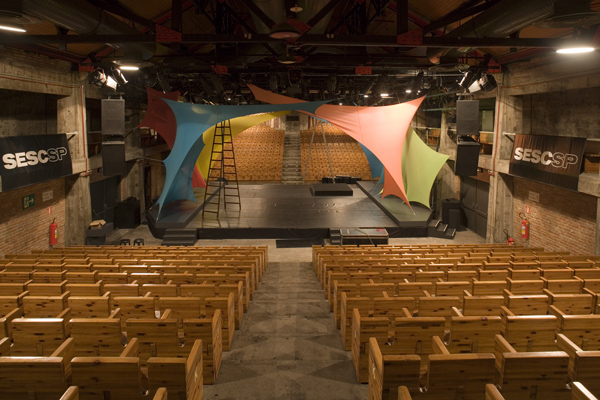
Last but not least, when the citizens of the beautiful city of Sao Paulo celebrate their own culture in theater and the performing arts, they turn to the SESC Pompeia Cultural Center by Lina Bo Bardi. Arguably Brazil’s most celebrated female architect, Lina Bo Bardi developed one of the most visually touching works of architecture in her country’s theater scene. From natural wooden seating to stark concrete walls to colorful, creative set backdrops, Bardi’s work has made impressions on hundreds of theater goers each night.
SESC Pompeia Cultural Center Gallery
 The plan of the Osler house
The plan of the Osler house Brazil architecture - Lucio Costa
Brazil architecture - Lucio Costa
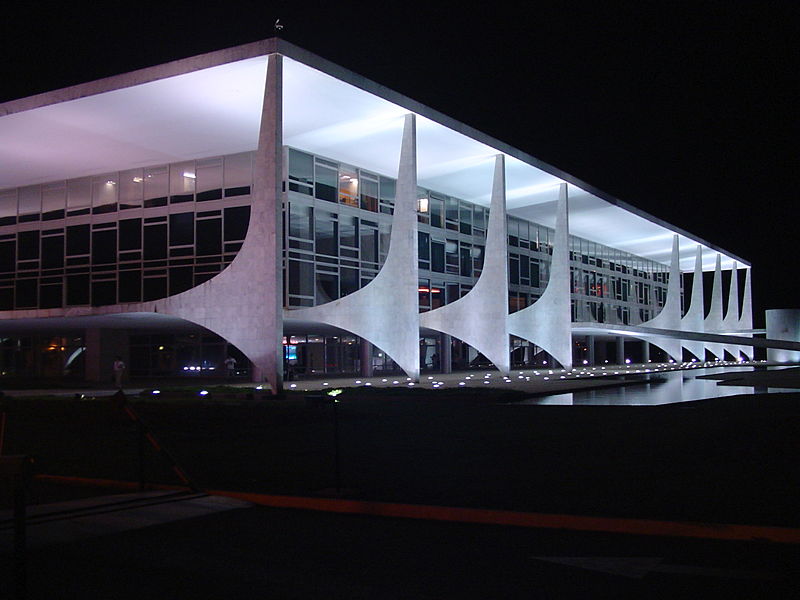
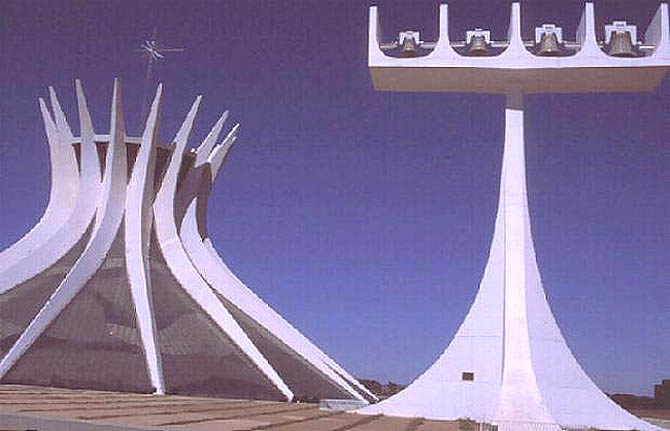
 ( http://www.emporis.com/en/wm/ci/bu/mf/?id=101008 )
( http://www.emporis.com/en/wm/ci/bu/mf/?id=101008 )El Faro I cao 170 m, xây năm 2003
Torre del Parque cao 144 m, xây năm 2006
Torre del Boulevard cao 144 m, xây năm 2007
Torre del Río cao 144 m, xây năm 2005
Edificio Alas cao 141 m, xây năm 1950
Torre BankBoston cao 137 m, xây năm 2001
 Edificio Kavanagh cao 120 m, xây năm 1936
Edificio Kavanagh cao 120 m, xây năm 1936 tại châu Mỹ. Tên của đế chế Inca trong tiếng Quechua là Tihuantinsuyo, có nghĩa là Bốn vùng thống nhất, tức bốn đơn vị hành chính trong đế chế là Chinchasuyo, Antisuyo, Contisuyo và Collasuyo. Người Inca đã đạt được những thành tựu rực rỡ trong văn hóa, khoa học, kĩ thuật. Họ có những biện pháp kĩ thuật đặc biệt để xây dựng những công trình bằng đá không cần dùng đến vữa mà các khối đã vẫn xếp rất khít nhau(không biết có liên hệ nào giữa các Tháp Chàm ở miền Trung VN với người Inca hay không?), đã xây dựng được nhiều công trình kiến trúc đáng kinh ngạc, thể hiện một trình độ khoa học kĩ thuật tiên tiến; trong đó phải kể đến quần thể kiến trúc Machu Picchu, những bức tường đá ở Sacsayhuaman, cố đô Cuzco nổi tiếng. Kiến trúc Peru chịu ảnh hưởng của hai dòng kiến trúc chính là kiến trúc Inca và kiến trúc Baroque. Khi Peru trở thành thuộc địa của Tây Ban Nha, kiến trúc Baroque đã nở rộ tại vùng đất này với việc xây dựng hàng loạt những nhà thờ, thánh đường lớn. Một trong số những công trình tiêu biểu của dòng kiến trúc Baroque Tây Ban Nha ở Peru là thánh đường San Francisco nằm trong khu trung tâm lịch sử Lima.
tại châu Mỹ. Tên của đế chế Inca trong tiếng Quechua là Tihuantinsuyo, có nghĩa là Bốn vùng thống nhất, tức bốn đơn vị hành chính trong đế chế là Chinchasuyo, Antisuyo, Contisuyo và Collasuyo. Người Inca đã đạt được những thành tựu rực rỡ trong văn hóa, khoa học, kĩ thuật. Họ có những biện pháp kĩ thuật đặc biệt để xây dựng những công trình bằng đá không cần dùng đến vữa mà các khối đã vẫn xếp rất khít nhau(không biết có liên hệ nào giữa các Tháp Chàm ở miền Trung VN với người Inca hay không?), đã xây dựng được nhiều công trình kiến trúc đáng kinh ngạc, thể hiện một trình độ khoa học kĩ thuật tiên tiến; trong đó phải kể đến quần thể kiến trúc Machu Picchu, những bức tường đá ở Sacsayhuaman, cố đô Cuzco nổi tiếng. Kiến trúc Peru chịu ảnh hưởng của hai dòng kiến trúc chính là kiến trúc Inca và kiến trúc Baroque. Khi Peru trở thành thuộc địa của Tây Ban Nha, kiến trúc Baroque đã nở rộ tại vùng đất này với việc xây dựng hàng loạt những nhà thờ, thánh đường lớn. Một trong số những công trình tiêu biểu của dòng kiến trúc Baroque Tây Ban Nha ở Peru là thánh đường San Francisco nằm trong khu trung tâm lịch sử Lima.Edificio Chocavento cao 107 m, xây năm 2001
Centro Civico cao 102 m, xây năm 1976
J.W. Marriott Hotel a.. cao 91 m, xây năm 2000
Wiese Sudameris Tower cao 90 m, xây năm 2000
Torre Interbank cao 88 m, xây năm 2000
Wiese Tower cao 85 m, xây năm 2000
Pacifico cao 76 m, xây năm 2006
AFP Profuturo cao 58 m, xây năm 2006
Torre Parque Mar, xây năm 2000
Siglo XXI Tower, xây năm 1998
PetroPeru Building, xây năm 1968
Torre San Antonio, xây năm 2006

 Carlos Raúl Villanueva là kiến trúc sư nổi tiếng nhất ở Venezuela; ông thiết kế Central University of Venezuela(được UNESCO công nhận là "di sản văn hoá TG")với Aula Magna. Những tác phẩm của ông: Capitol(Quốc Hội), Baralt Theatre, Teresa Carreño Cultural Complex, cây cầu General Rafael Urdaneta.
Carlos Raúl Villanueva là kiến trúc sư nổi tiếng nhất ở Venezuela; ông thiết kế Central University of Venezuela(được UNESCO công nhận là "di sản văn hoá TG")với Aula Magna. Những tác phẩm của ông: Capitol(Quốc Hội), Baralt Theatre, Teresa Carreño Cultural Complex, cây cầu General Rafael Urdaneta.Parque Central Torre ..cao 221 m, xây năm 1979
Parque Central Torre ..cao 221 m, xây năm 1984
Centro Financiero Con..cao 190 m
Banco Mercantil cao 179 m, xây năm 1982
Centro Financiero Pro..cao 160 m, xây năm 1984
Edificio Citibank cao 125 m, xây năm 1999
Torre Movilnet cao 125 m, xây năm 1999
Torre Corp Banca cao 124 m,, xây năm 1966
Torre Polar II cao 122 m, xây năm 1995
Residencias El Tejar cao 120 m, xây năm 1972







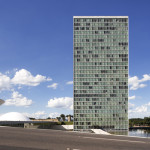
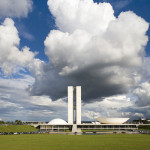
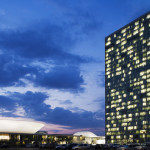
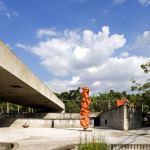
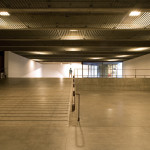
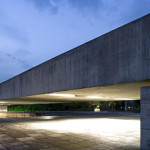
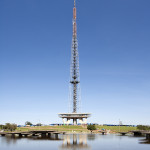
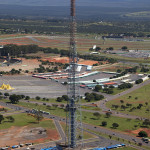
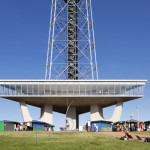
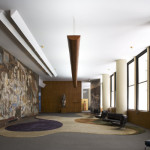
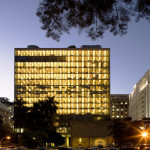
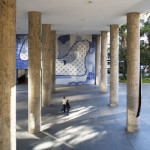
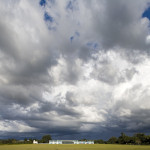
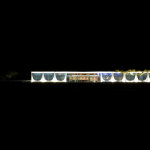
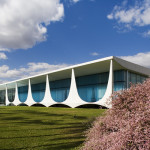
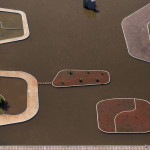
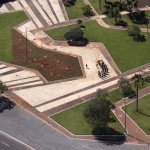
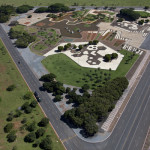
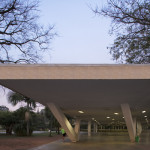
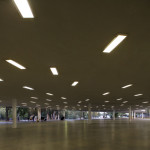
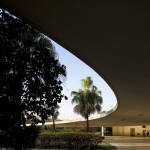
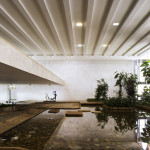
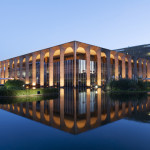
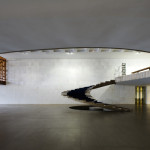
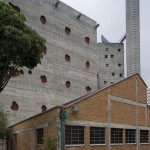
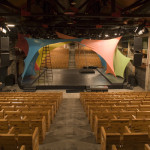
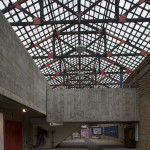



No comments:
Post a Comment